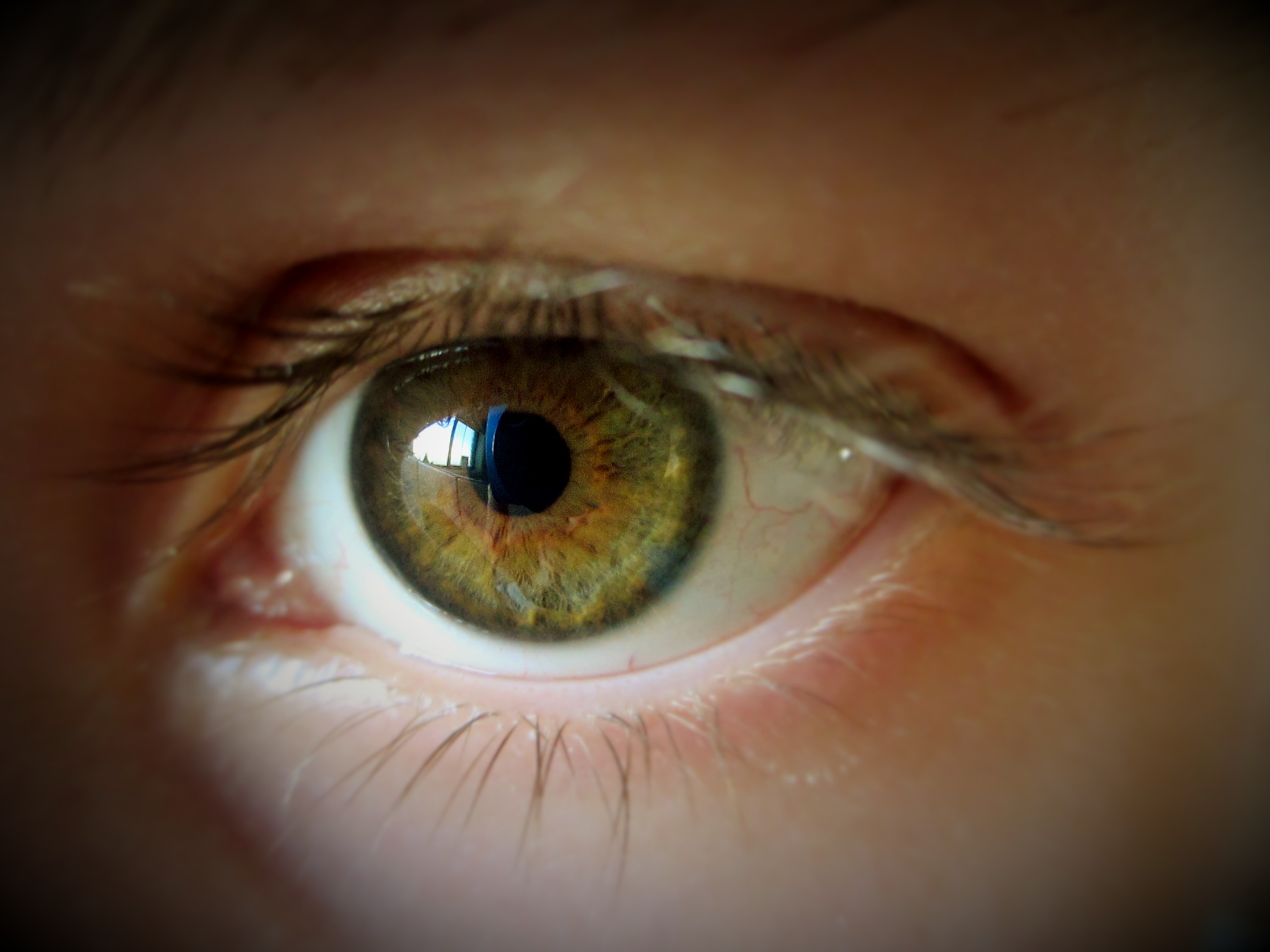Green Hazel Eyes - A Closer Look At Their Unique Charm
Eye colors have a way of capturing our attention, don't they? They are, after all, a truly striking part of what makes each person distinct. From the deepest browns to the clearest blues, every shade holds a certain appeal, yet some hues seem to spark a bit more curiosity than others. It's almost as if certain eye colors carry a special kind of allure, drawing you in with their subtle shifts and intriguing depths.
When we talk about eye colors, there are two particular shades that often get mixed up, and for pretty good reason, too. These are the shades of green and hazel, both known for being quite captivating and, in a way, rather unique. People often find themselves wondering if their own eyes, or perhaps the eyes of someone they know, truly fit into the green category or if they are, in fact, more of a hazel. This confusion is quite common, as these two eye colors can appear quite similar at first glance, yet they hold some truly distinct characteristics if you know what to look for, you know?
This discussion aims to clear up some of that confusion, offering a friendly guide to understanding what makes green eyes different from hazel ones. We'll look at the tiny details that separate them, like the colors you might spot in the iris, or how they seem to change depending on the light around you. We will, of course, also talk about the subtle variations in their appearance, the way light plays across them, and what gives them their particular look. By the time we're done, you should have a much clearer picture of these fascinating eye colors.
Table of Contents
- What Makes Green Hazel Eyes So Special?
- The Core Difference - Pigmentation and Appearance
- How Do You Really Tell Apart Green Hazel Eyes?
- Are Green Hazel Eyes Truly Rare?
- What Influences the Look of Green Hazel Eyes?
- Green Hazel Eyes - A Genetic Story
- Observing Green Hazel Eyes - Light and Limbal Rings
- Green Hazel Eyes - Beyond the Basics
What Makes Green Hazel Eyes So Special?
When you take a moment to really look at someone's eyes, especially those with shades of green or hazel, you might notice how they seem to hold a certain kind of depth. It's like they tell a story without saying a word, isn't it? These particular eye colors are often thought of as rather captivating, and for good reason. They are not as common as some other eye colors, which gives them a bit of an unusual charm. People are naturally drawn to things that are a little bit out of the ordinary, and these eye colors certainly fit that description, so.
The Core Difference - Pigmentation and Appearance
The main way to tell green eyes from hazel eyes really comes down to the tiny bits of color, or pigmentation, found in the front part of the eye, which is called the iris. Think of it like this: your eye color is essentially a mix of different pigments, and the amount and type of these pigments determine the final shade you see. Green eyes, for instance, typically have a specific kind of green pigment that makes them appear, well, mostly green. It’s a pretty consistent color across the whole iris, in a way.
Hazel eyes, on the other hand, are a bit more of a blend. They are not just one color; they are a mix of green, brown, and sometimes even gold or amber tones. You might spot tiny flecks or streaks of these different colors, giving the eye a kind of shifting, multi-toned look. This mix is what makes hazel eyes so interesting to look at, as they can appear quite different depending on how the light hits them, or what colors you are wearing, too. It’s almost like each hazel eye tells its own unique color story, you know?
How Do You Really Tell Apart Green Hazel Eyes?
To really figure out if eyes are green or hazel, you need to take a good, close look at the colored part of the eye, the iris, especially when there's plenty of natural light around. This is perhaps the best way to observe the subtle differences. Green eyes usually show a pretty solid green color, meaning the whole iris looks like one shade of green. There might be some slight variations, but the overall impression is that of a single, uniform green hue. It's fairly straightforward, you see.
Now, with hazel eyes, it's a different story. You'll often see a blend of colors. There might be a ring of brown right around the center, near the dark circle of the pupil, and then as you move outwards, you might notice shades of green mixed in, or perhaps even some golden specks. This multi-colored effect is a really good sign that you're looking at hazel eyes. It’s that blend, that combination of different earthy tones, that gives hazel its distinctive character, actually. So, if you see more than just green, chances are it's hazel.
Are Green Hazel Eyes Truly Rare?
Both green and hazel eyes are considered pretty uncommon when you compare them to the more widespread eye colors like brown or blue. This rarity is part of what makes them so appealing to many people. In the United States, for instance, brown eyes are by far the most common, and blue eyes come in second. Hazel eyes make up a smaller portion of the population, typically around ten percent, which is quite a bit less common, you know?
Green eyes are even more unusual, making them one of the least common eye colors out there. This scarcity adds to their perceived beauty and uniqueness. It’s like finding a special gem; the fewer there are, the more precious they seem. So, if you happen to have green or hazel eyes, you're basically part of a rather select group, which is pretty neat, isn't it?
What Influences the Look of Green Hazel Eyes?
The way green hazel eyes appear can actually change quite a bit depending on the light around them. For example, if you're standing in bright sunlight, the colors in hazel eyes might seem to pop more, with the golden or amber flecks becoming more noticeable. In dimmer light, those same hazel eyes might look a bit more subdued, perhaps even appearing more brown or more green, depending on the dominant shades within the iris. It's almost like they have a chameleon-like quality, you know?
Even the colors you wear can play a part in how your green hazel eyes are perceived. If you wear clothes that are, say, a deep green, it might make the green parts of your hazel eyes stand out more. Similarly, earthy tones like browns or golds could emphasize the warmer shades in hazel eyes. This is why some people choose certain makeup colors or clothing to really bring out the best in their eye color. It's a fun way to play with appearance, basically.
Green Hazel Eyes - A Genetic Story
The color of your eyes, including whether they are green or hazel, is mostly decided by the tiny instructions passed down from your parents, which we call genes. It’s a bit like a recipe, where different ingredients come together to create the final outcome. For eye color, these instructions tell your body how much of certain pigments, like melanin, to produce and how to spread them out in the iris. This is why eye color often runs in families, you see.
Specifically, the amount and type of melanin are key. Hazel eyes, for instance, tend to have a bit more melanin than green eyes, and this melanin is often distributed in a particular pattern, giving them their multi-toned appearance. Green eyes, on the other hand, have a different concentration of pigments that results in that striking green hue. It's quite fascinating how these tiny genetic differences can lead to such varied and beautiful eye colors, isn't it?
Observing Green Hazel Eyes - Light and Limbal Rings
When you're trying to figure out if someone has green or hazel eyes, observing them in various lighting conditions can be incredibly helpful. As mentioned, the appearance of green hazel eyes can shift, and this is especially true for hazel eyes. In bright, natural light, the different shades within a hazel iris become much more apparent, allowing you to clearly see the mix of brown, green, and gold. This kind of light helps reveal the true complexity of the color, sort of like turning on a spotlight, you know?
Beyond just the main color, there are other features of the eye that can give clues. For instance, some people have what's called a limbal ring, which is a darker circle around the very edge of the iris. While not exclusive to green or hazel eyes, how this ring interacts with the main color can sometimes offer hints. The way the light plays on these different elements helps to show the full range of colors and patterns present, making it easier to distinguish between a solid green and a more varied hazel, in a way.
Green Hazel Eyes - Beyond the Basics
Beyond the main color differences, there are other interesting things about eyes that can sometimes be confused with green or hazel. For example, some people have a condition called heterochromia, where each eye is a different color, or parts of the same eye have different colors. This is quite rare and distinct from the typical variations seen in green or hazel eyes, though it can sometimes involve green or brown shades, naturally.
The journey of how our eye colors develop is also quite interesting. Many babies are born with blue eyes, and their eye color can change over the first few months or even years of life as more melanin develops. This is why a baby's eye color at birth might not be their permanent color. It’s a process that shows how dynamic and unique eye color can be, with green and hazel eyes being particularly interesting examples of this subtle development, you know?

Learn About Hazel GREEN Eyes | Guy Counseling

Green hazel : eyes

What is the best hair color for hazel eyes? - Hair Adviser